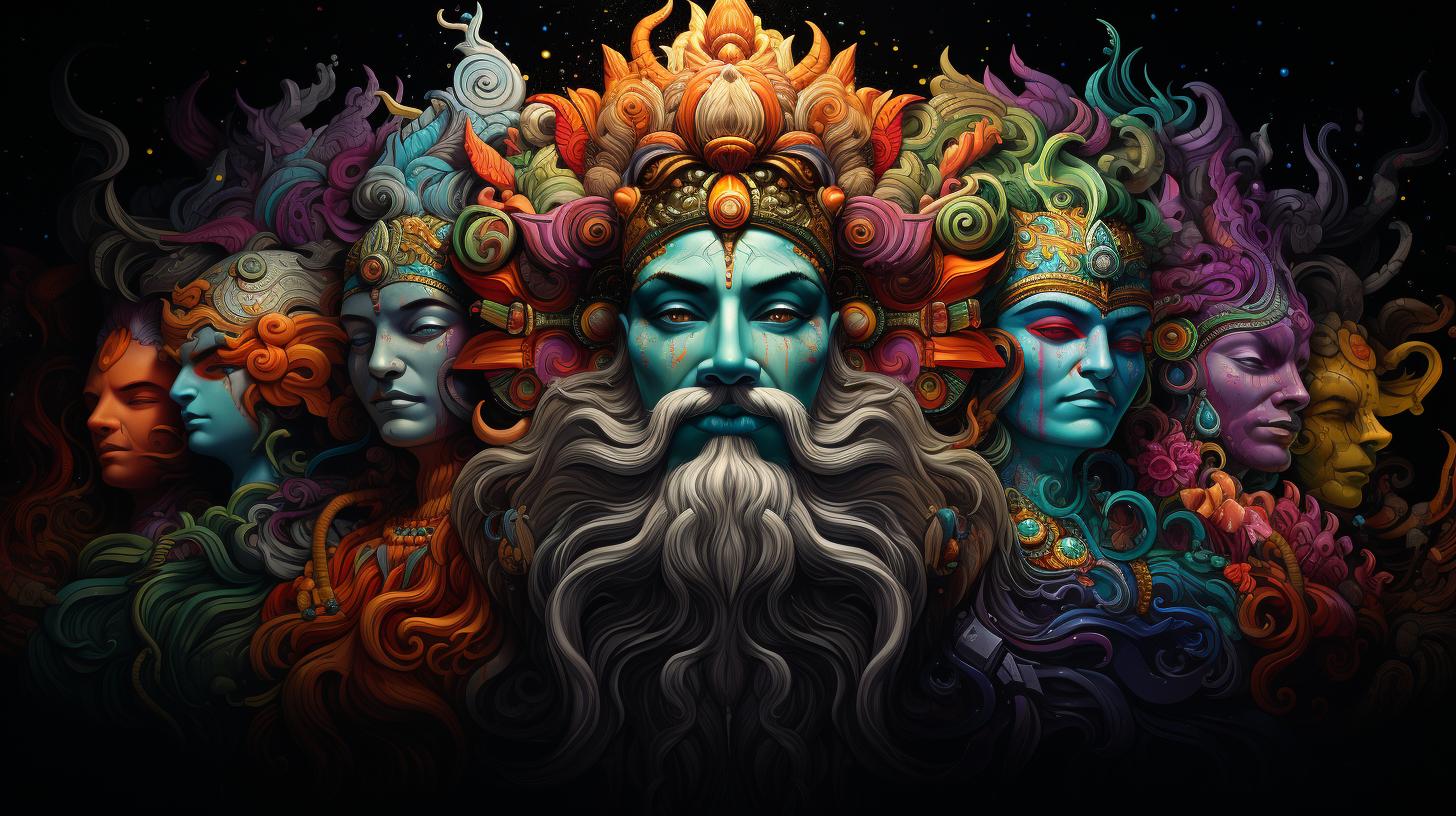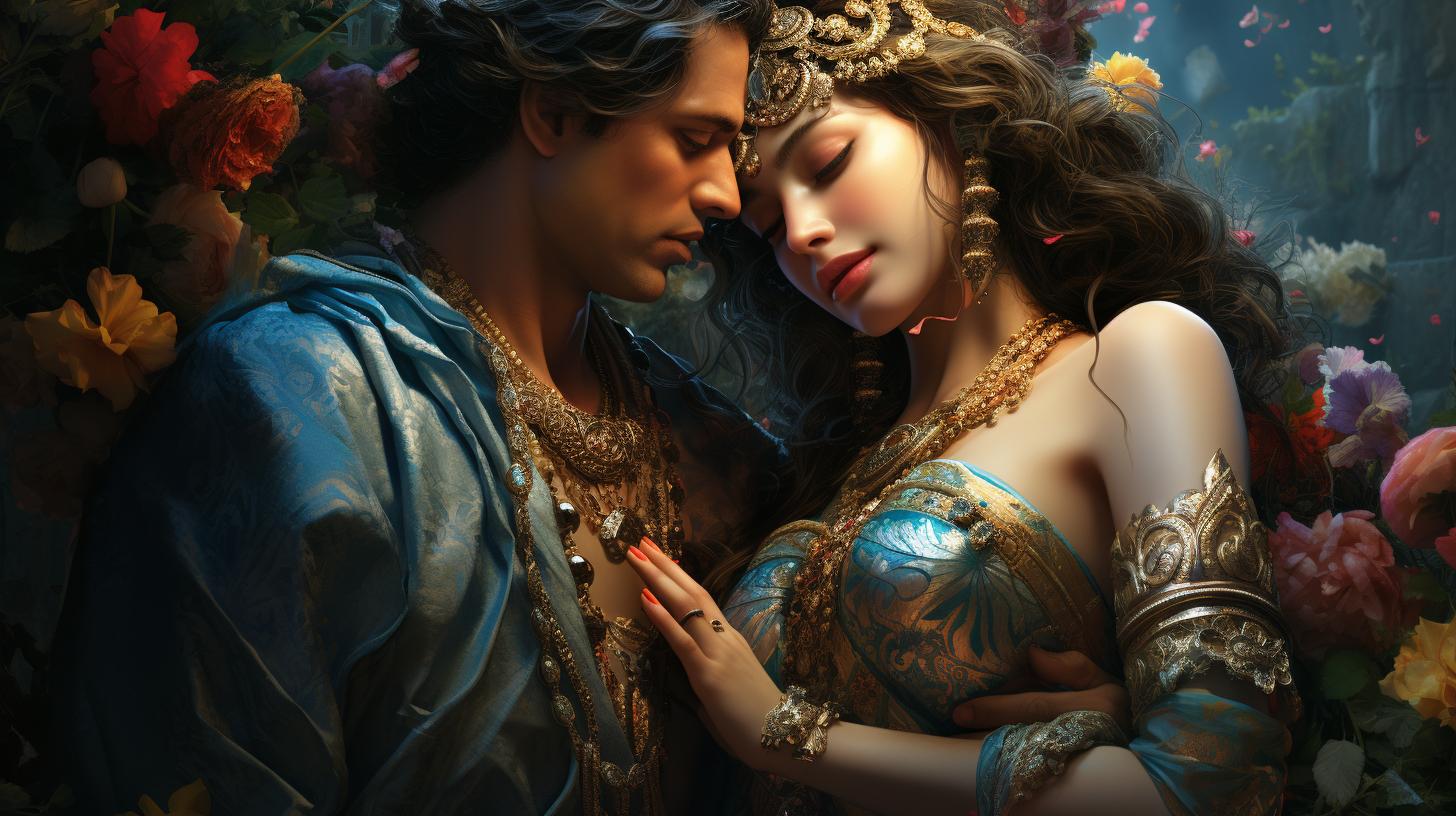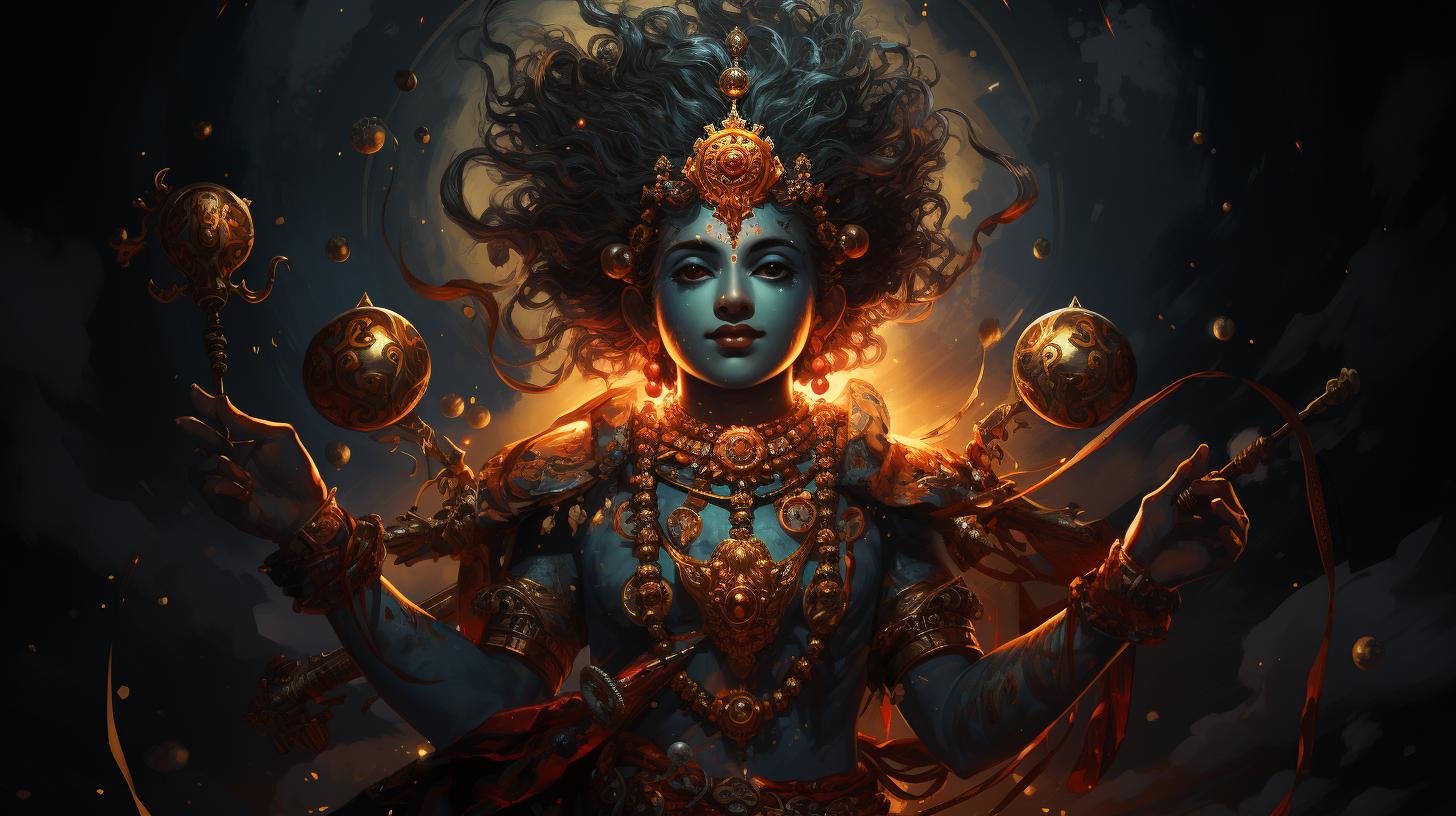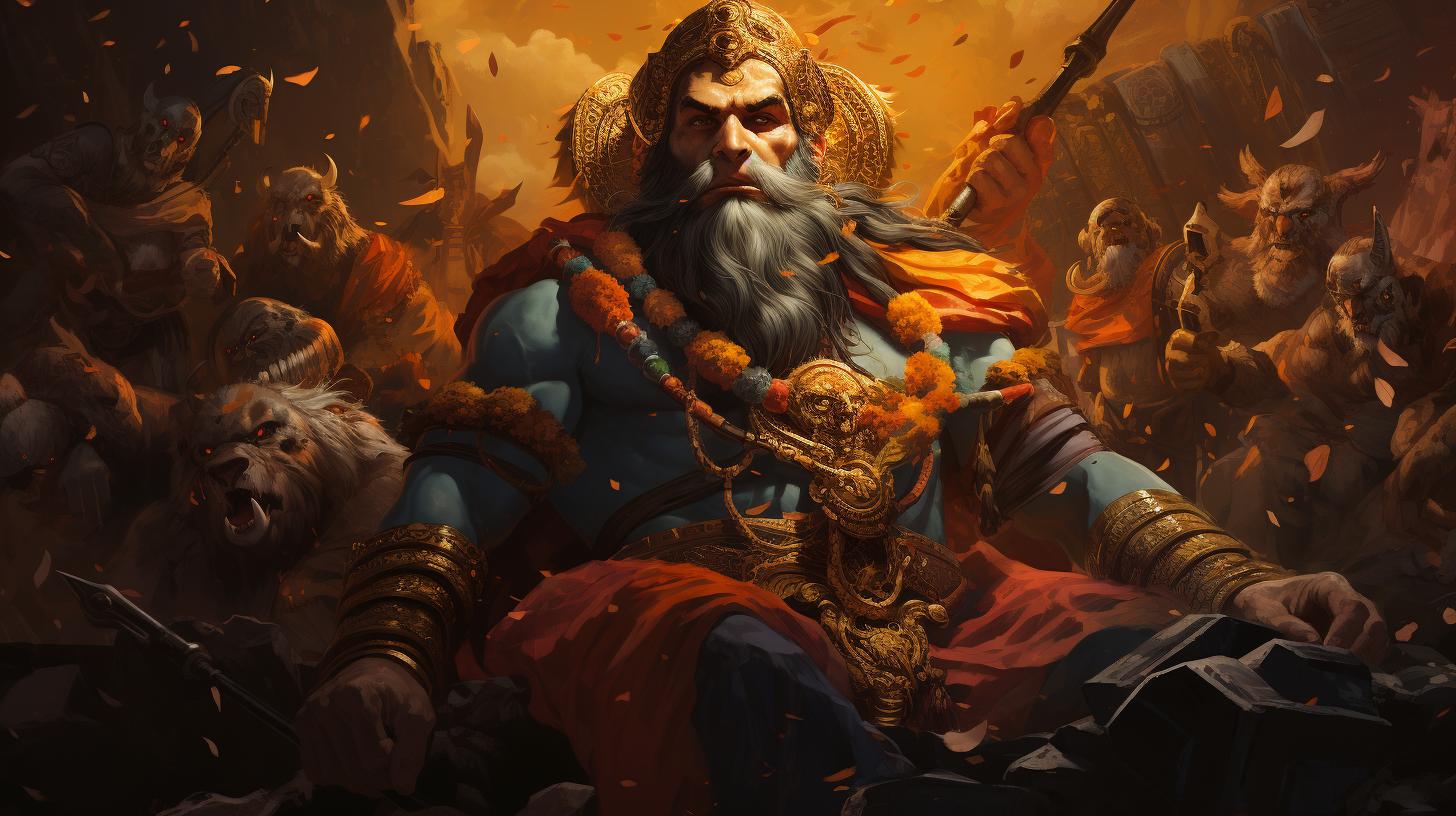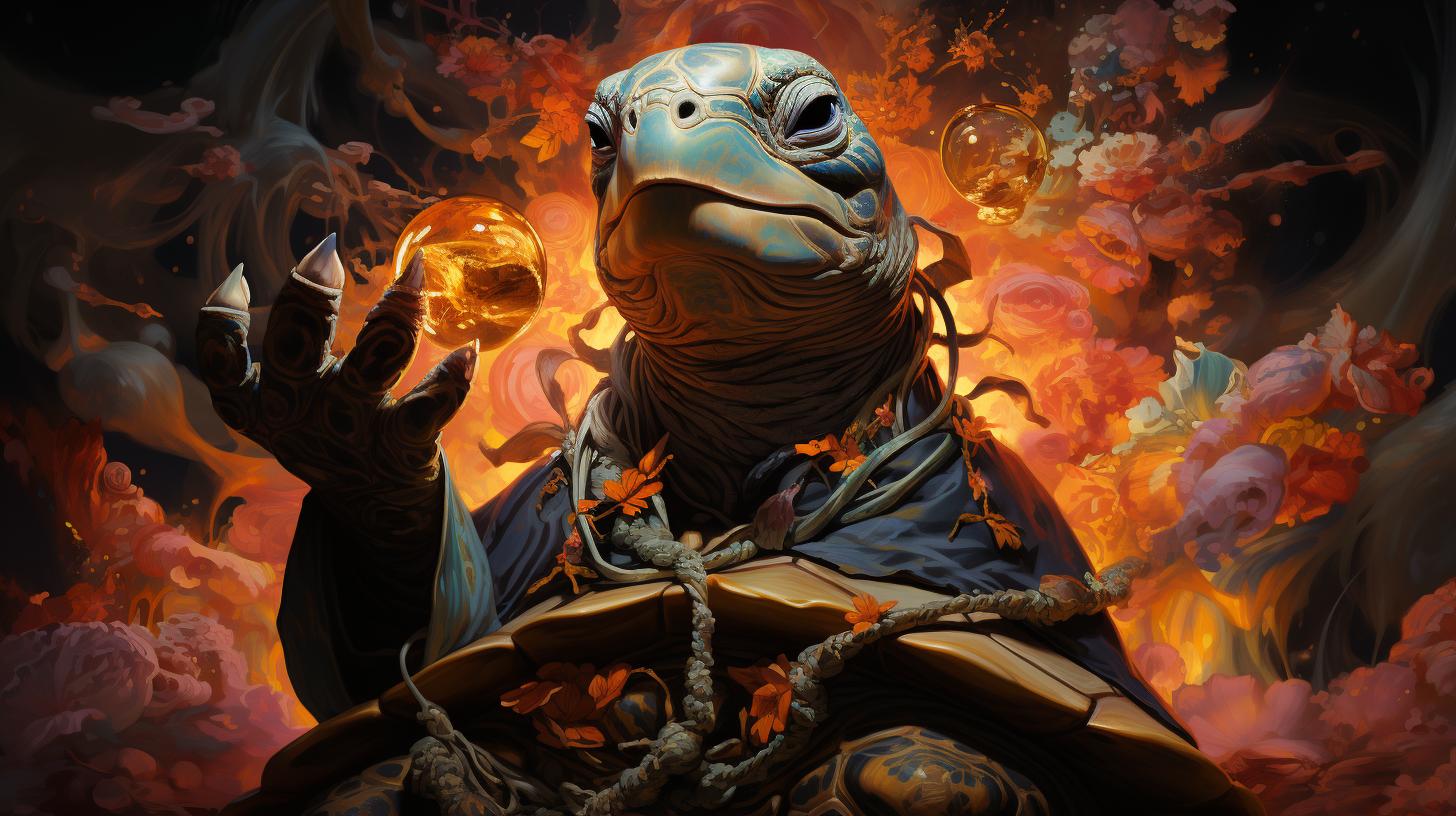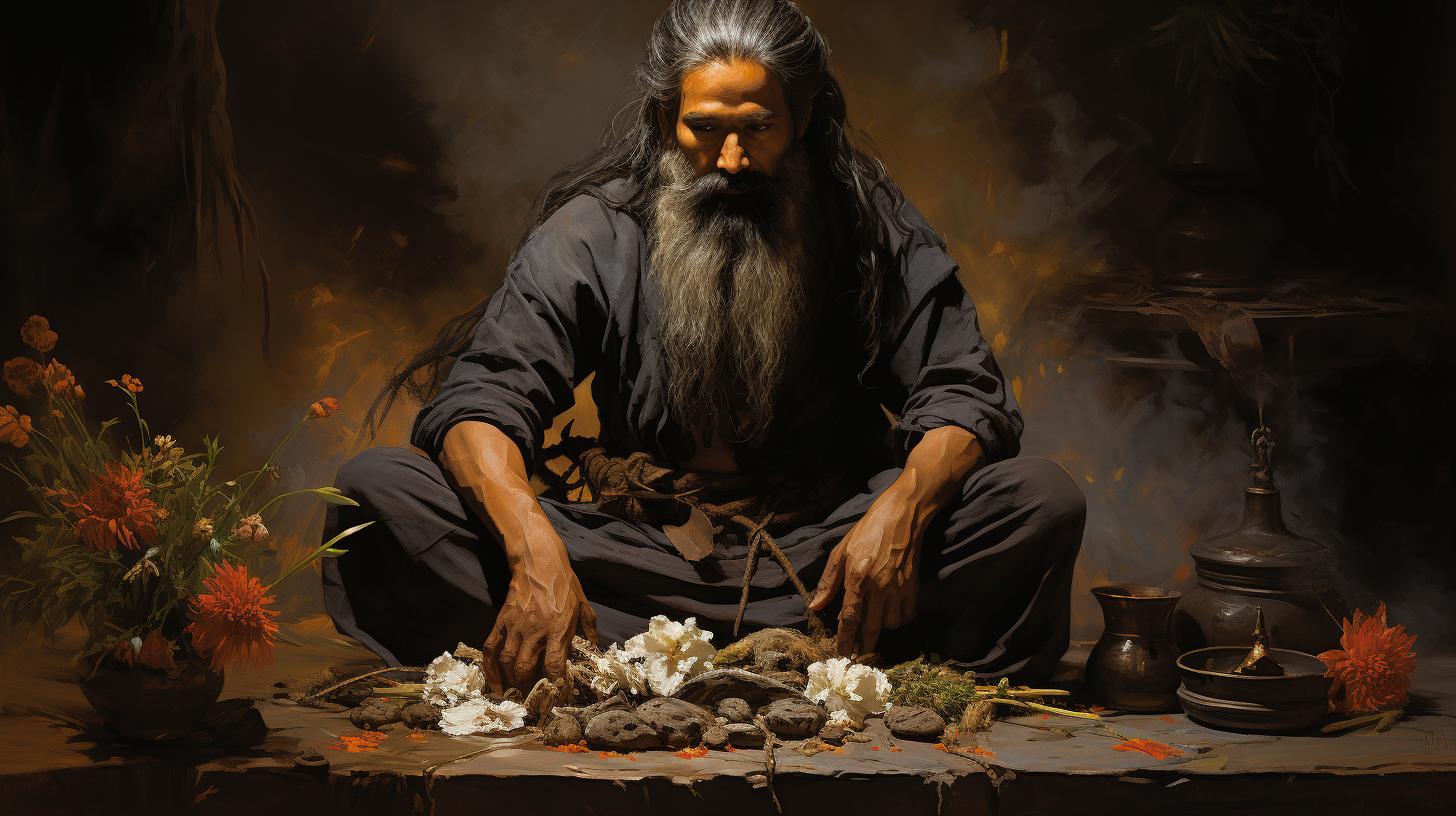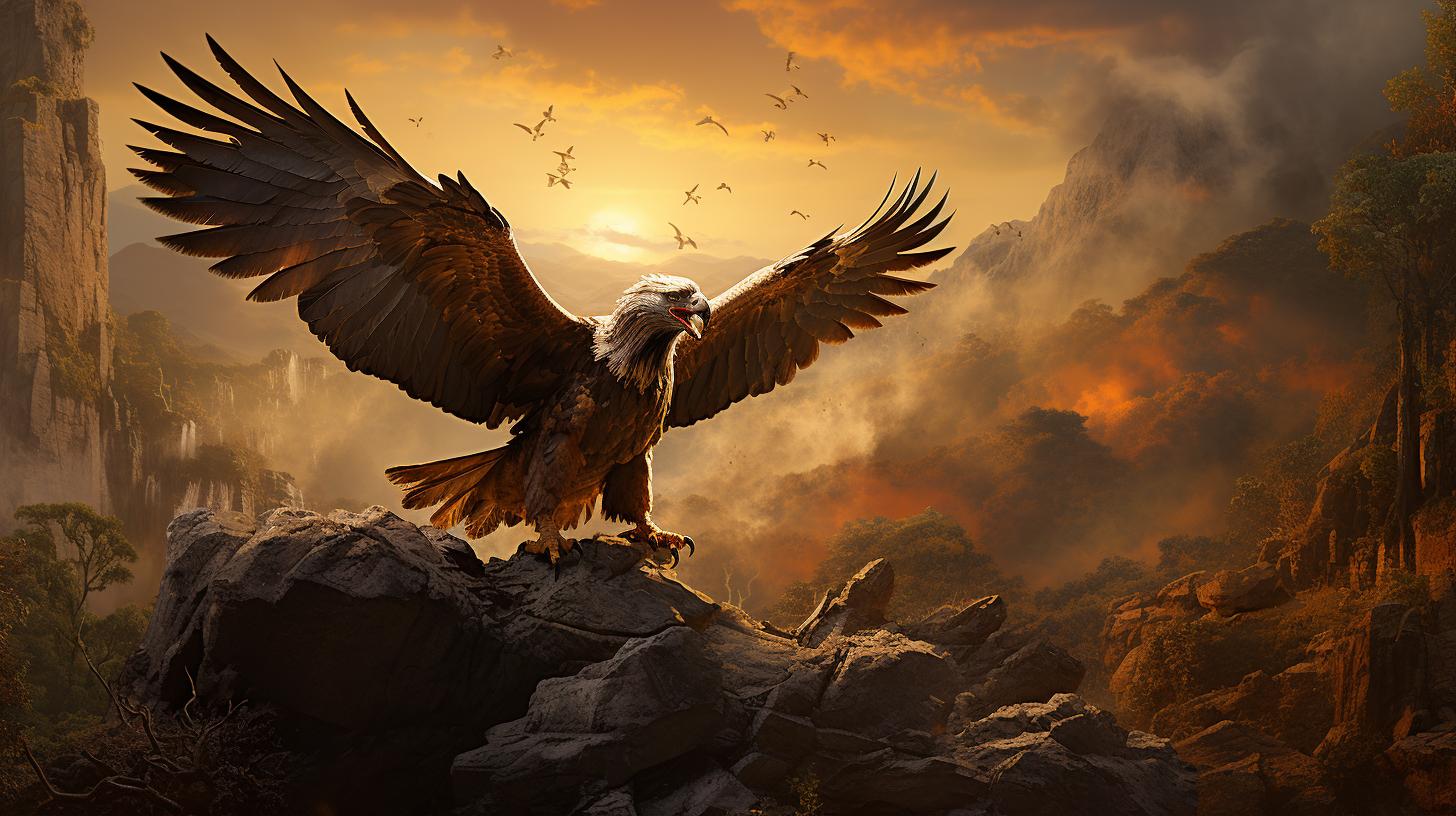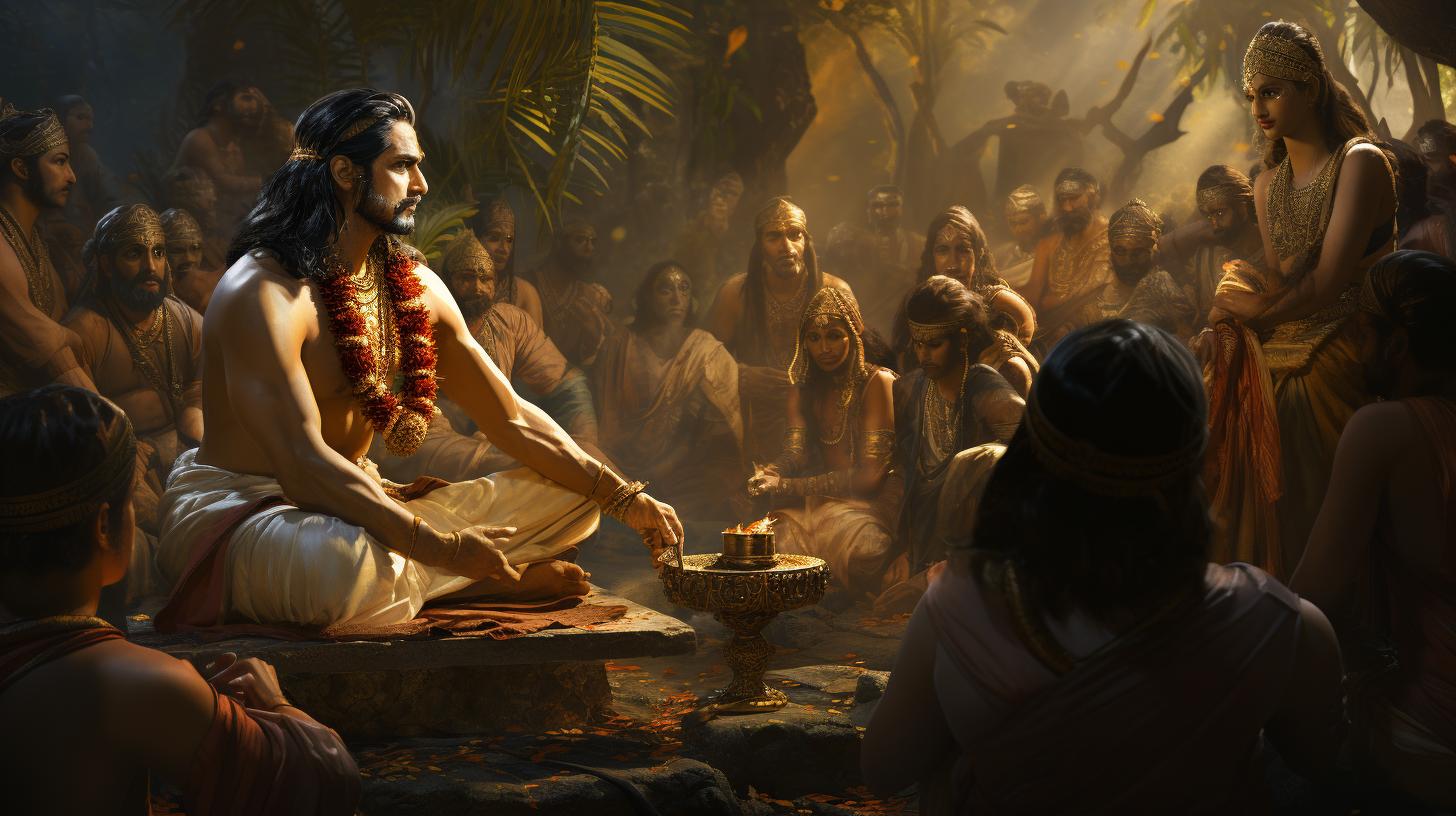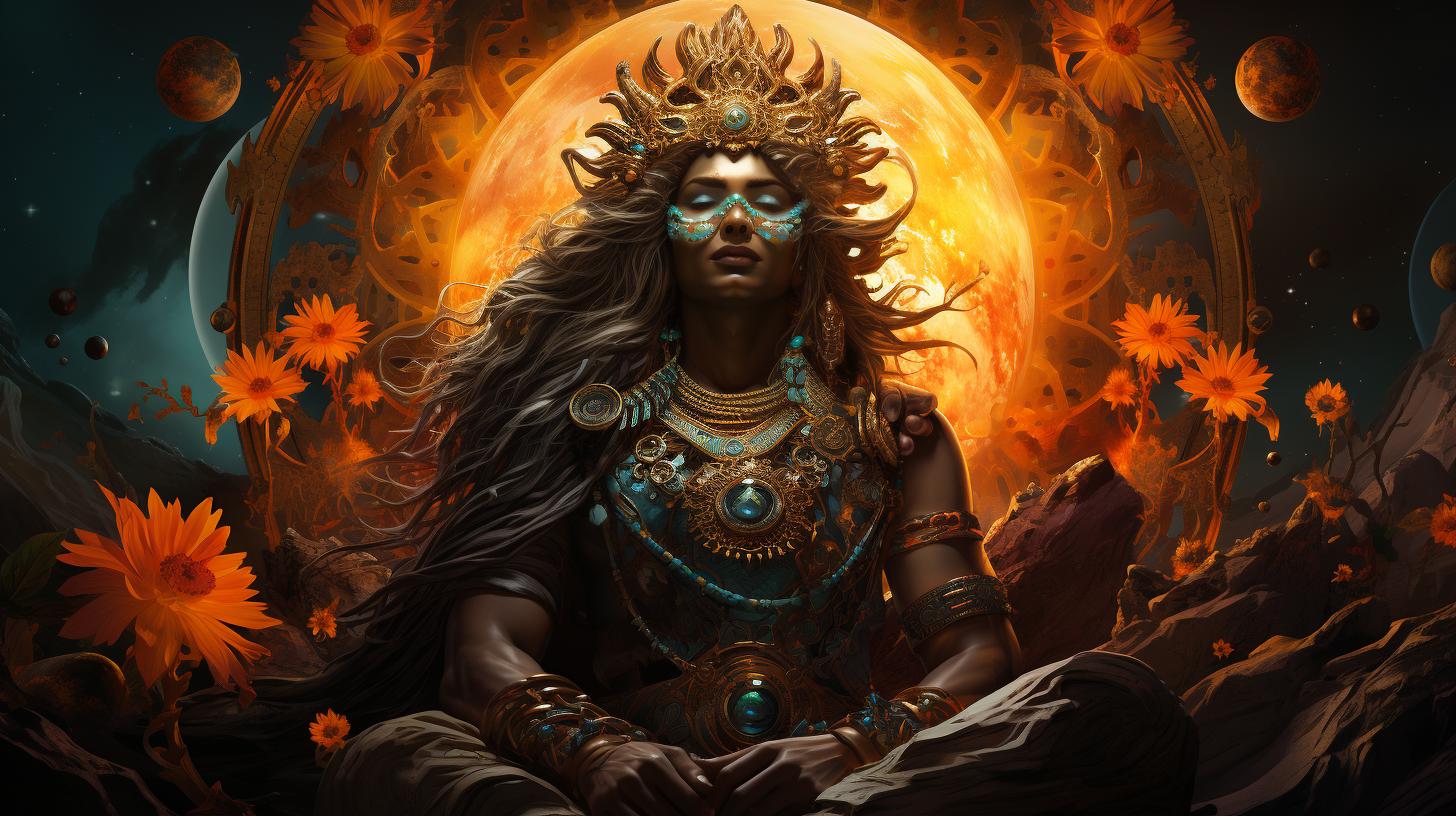Who is Brahma, the Indian God? A Comprehensive Guide to Understanding Brahma’s Role in Hinduism
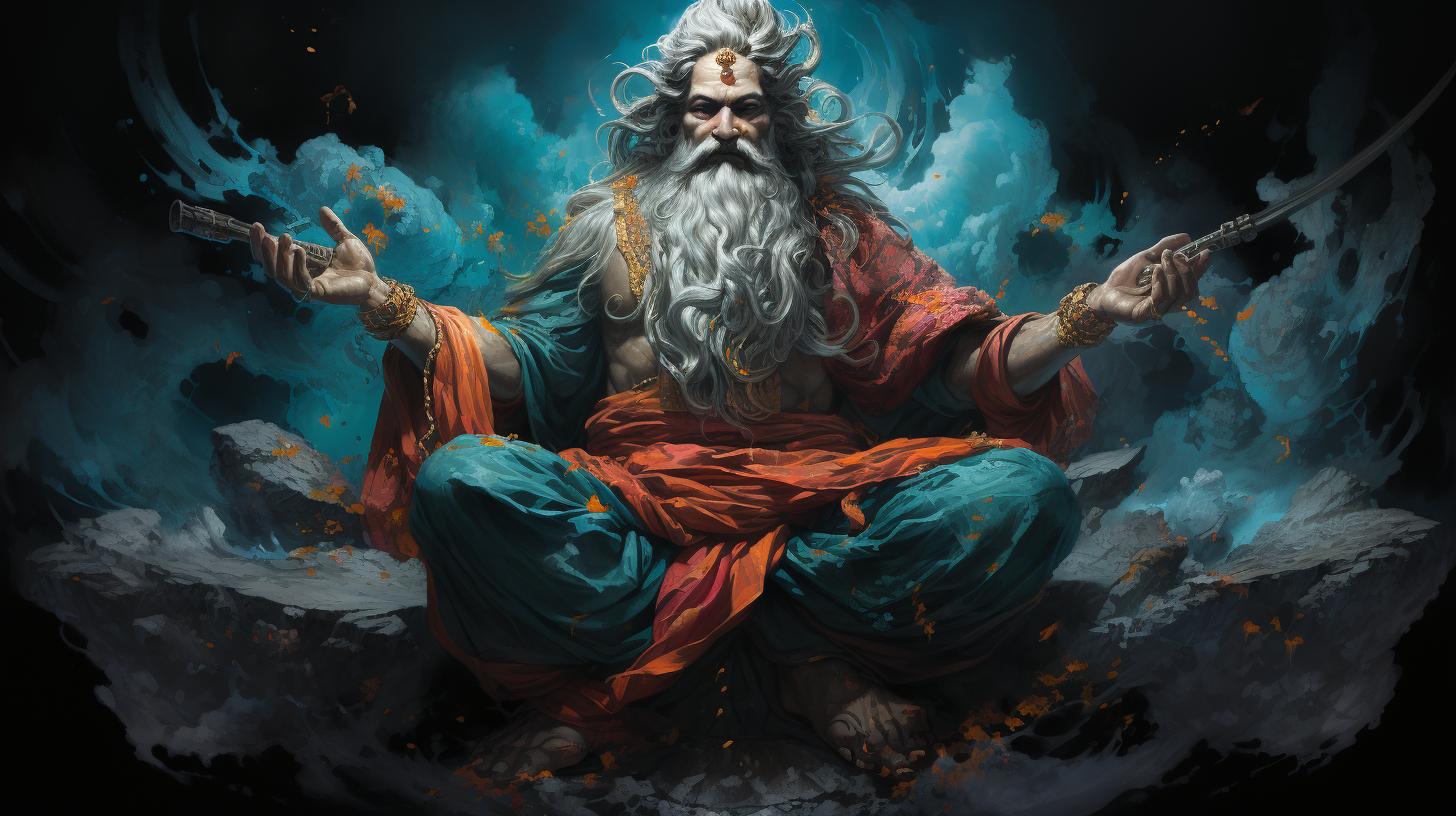
Brahma, the Indian god, holds a significant role in Hinduism. This article provides an overview of Brahma’s characteristics, symbols, and his worship in Hindu traditions. It explores Brahma’s relationship with Vishnu and Shiva, as well as his presence in different cultures and influences.
Additionally, common questions about Brahma are addressed, including his significance in Hinduism and the existence of dedicated temples. For a comprehensive guide to Hindu deities and cosmology, along with related topics, please refer to the provided links.
Understanding Brahma: Key Characteristics and Symbols
In this section, we will explore the key characteristics and symbols associated with Brahma, a significant deity in Hinduism.
Depictions of Brahma in Art and Iconography
Brahma is often depicted in Hindu art and iconography with distinctive attributes that symbolize his unique role as the Creator in the Hindu pantheon. He is typically portrayed with:
- Four faces, each facing a different direction to represent his all-encompassing knowledge and presence.
- Four arms, symbolizing his ability to carry out multiple tasks simultaneously.
- A beard, symbolizing his wisdom and maturity.
- A crown, symbolizing his supreme status as a deity.
Artistic representations of Brahma also often depict him sitting on a lotus flower, which symbolizes purity and divine creation.
Additionally, he is sometimes shown carrying sacred scriptures or a rosary in his hands, representing knowledge and spirituality.
Symbols Associated with Brahma and Their Meanings
Several symbols are closely associated with Brahma and carry various meanings in relation to his attributes and role. These symbols include:
- Lotus: Symbolizes purity, enlightenment, and divine creation.
- Swan: Represents wisdom, discernment, and the ability to separate knowledge from ignorance.
- Water Pot (Kamandalu): Signifies the sacredness of water and Brahma’s role in creation and preservation.
- Bejeweled Staff (Scepter): Symbolizes authority and control.
- Hamsa (Divine Goose): Represents discernment, grace, and the ability to separate the eternal from the transient.
- Pushpavrata (Flowery Canopy): Symbolizes abundance, prosperity, and divine blessings.
These symbols associated with Brahma not only add depth to his depictions but also carry profound symbolic meanings that reflect his divine attributes and significance.
Brahma’s Role in Hinduism: Worship and Beliefs
Worship of Brahma holds a significant place in Hinduism, and devotees revere him as one of the principal deities in the Hindu pantheon. Let’s explore the various aspects of Brahma’s role in Hinduism, including his status, temples dedicated to him, and the festivals and rituals associated with his worship.
Brahma as a Deity in Hindu Pantheon
Brahma, known as the creator god, is one of the Trimurti, the triad of deities in Hinduism. Despite being the creator, Brahma is not widely worshipped as his counterparts Vishnu and Shiva. However, he has an important place in Hindu cosmology and mythology.
As a representation of creation, Brahma is associated with the creation of the universe, mankind, and all living beings. He is often depicted with four faces, each symbolizing the four Vedas, the sacred texts of Hinduism.
Brahma is also depicted with multiple arms and holds various objects, such as the rosary, the Vedas, and a lotus, which symbolizes purity and divine birth.
Temples Dedicated to Brahma and Worship Practices
While there are numerous temples dedicated to Vishnu and Shiva, finding temples solely dedicated to Brahma is relatively rare.
One of the most renowned Brahma temples is the Brahma Temple in Pushkar, Rajasthan, India. Devotees visit this temple to seek Brahma’s blessings and offer prayers.
In worship practices, devotees perform rituals to pay homage to Brahma.
These rituals may involve chanting Vedic hymns and mantras, making offerings of flowers, fruits, and incense, and performing aarti, a ceremonial waving of lights.
Festivals and Rituals Associated with Brahma
While there are no major festivals exclusively dedicated to Brahma, his presence is acknowledged in various Hindu festivals. One such festival is Maha Shivaratri, where Brahma’s role as a creator deity is honored alongside Shiva’s cosmic dance.
During this festival, devotees engage in fasting, meditation, and chanting to seek blessings from Brahma and Shiva.
Brahma’s presence is also observed during other Hindu celebrations, such as Navaratri, Diwali, and Holi, where devotees offer prayers to multiple deities, including Brahma, for their auspiciousness and blessings.
Overall, Brahma’s worship and beliefs in Hinduism encompass his role as the creator, his representation in temples, and the inclusion of his presence in various festivals and rituals. Understanding and appreciating Brahma’s significance provides insights into the rich Hindu tradition and the interconnectedness of its deities.
Brahma in Relation to Other Gods and Goddesses
In Hindu mythology, Brahma holds a significant position as one of the three main gods in the Hindu pantheon, alongside Vishnu and Shiva. This section explores Brahma’s relationships with these two deities and the unique dynamics within the divine trinity.
Brahma’s Relationship with Vishnu and Shiva
Brahma shares a complex relationship with Vishnu and Shiva. According to Hindu mythology, Brahma is considered the creator of the universe, while Vishnu is the preserver and Shiva is the destroyer.
They form a sacred trinity known as the Trimurti, representing the cyclical nature of existence.
Vishnu, the second deity in the trinity, sustains and maintains the created universe. Brahma is often depicted as being born from Vishnu’s navel or emerging from a lotus that grows from Vishnu’s navel, highlighting their interdependence.
Shiva, the third deity, is responsible for the dissolution of the universe, paving the way for creation to begin again. Brahma and Shiva occasionally work together to accomplish divine missions, despite their divergent cosmic roles.
The Trinity of Hindu Gods: Brahma, Vishnu, and Shiva
The trinity of Brahma, Vishnu, and Shiva symbolizes the cosmic forces of creation, preservation, and destruction. Together, they represent the eternal cycle of existence. Brahma, as the creator, brings life into being; Vishnu, as the preserver, ensures its continuity; and Shiva, as the destroyer, clears the way for new creation.
- Brahma creates and brings forth existence.
- Vishnu nurtures and upholds the created world.
- Shiva concludes and transforms the existing reality.
These three deities are not separate entities but interconnected aspects of the divine, each with their own unique characteristics and responsibilities.
Brahma in Different Cultures and Influences
Brahma, the Indian god, does not only hold significance in Hinduism but also has a presence in different cultures and influences. Let’s explore Brahma’s portrayal in Southeast Asian and East Asian traditions and his role in literature and folklore.
Brahma in Southeast Asian and East Asian Traditions
In Southeast Asian traditions, Brahma is often depicted as part of the Trimurti, alongside Vishnu and Shiva. His representation is highly influenced by Hinduism, with similar attributes and symbols.
In countries like Thailand and Indonesia, Brahma is regarded as one of the major deities and is worshipped with great reverence.
In East Asian traditions, such as those found in China and Japan, Brahma’s influence can be seen through the adoption and incorporation of certain Hindu beliefs and practices.
However, it is essential to note that Brahma’s presence in these cultures may differ from his depiction in Hinduism, as the interpretation and assimilation into local beliefs have resulted in unique nuances.
Brahma’s Presence in Literature and Folklore
Brahma’s existence transcends religious texts and finds its place in various forms of literature and folklore. In Hindu scriptures like the Vedas, Puranas, and Epics, Brahma plays a significant role in creation narratives and cosmic legends.
His representation in these ancient texts further contributes to the understanding of his divine attributes and symbolism.
Furthermore, Brahma’s portrayal in folklore adds layers of cultural significance and storytelling. Folktales and myths present Brahma as a central character in various narratives, symbolizing creation, knowledge, and divinity.
These stories serve as a means to convey moral teachings, cultural values, and spiritual concepts to the readers or listeners.
This exploration into Brahma’s presence in different cultures and influences demonstrates the wide-ranging impact of his deity status and mythology beyond the boundaries of traditional Hinduism.
By examining the multifaceted representations of Brahma, we gain a deeper understanding of his universal significance and enduring legacy.
Common Questions and FAQs about Brahma
What is Brahma’s significance in Hinduism?
Brahma holds great significance in Hinduism as one of the principal deities. He is revered as the creator of the universe and is responsible for the creation, maintenance, and dissolution of all life forms.
Brahma represents the aspect of creation and is often depicted with four heads, symbolizing his vast knowledge and wisdom.
How does Brahma relate to other Hindu deities?
Brahma is often viewed as part of the divine trinity in Hinduism, alongside Vishnu and Shiva. While Brahma is associated with creation, Vishnu is seen as the preserver, and Shiva is considered the destroyer.
Together, they represent the cyclical nature of the universe and the different aspects of existence. Brahma works in harmony with Vishnu and Shiva to maintain cosmic order.
Are there temples dedicated solely to Brahma?
Although Brahma is a revered deity in Hinduism, temples solely dedicated to Brahma are relatively rare.
One prominent temple dedicated to Brahma is the Brahma Temple in Pushkar, Rajasthan, India. It is believed to be one of the few remaining temples dedicated exclusively to Brahma. Devotees visit the temple to seek blessings and offer prayers to Brahma.
What are some key symbols associated with Brahma?
- Lotus: The lotus flower is a recurring symbol associated with Brahma. It symbolizes purity, enlightenment, and the unfolding of spiritual consciousness.
- Swan: Brahma is often depicted with a swan as his vehicle known as “hamsa.”
The swan symbolizes discrimination, grace, and spiritual purity.
- Vedas: Brahma is often depicted holding the Vedas, the ancient scriptures of Hinduism. This signifies his role as the source of knowledge and wisdom.











